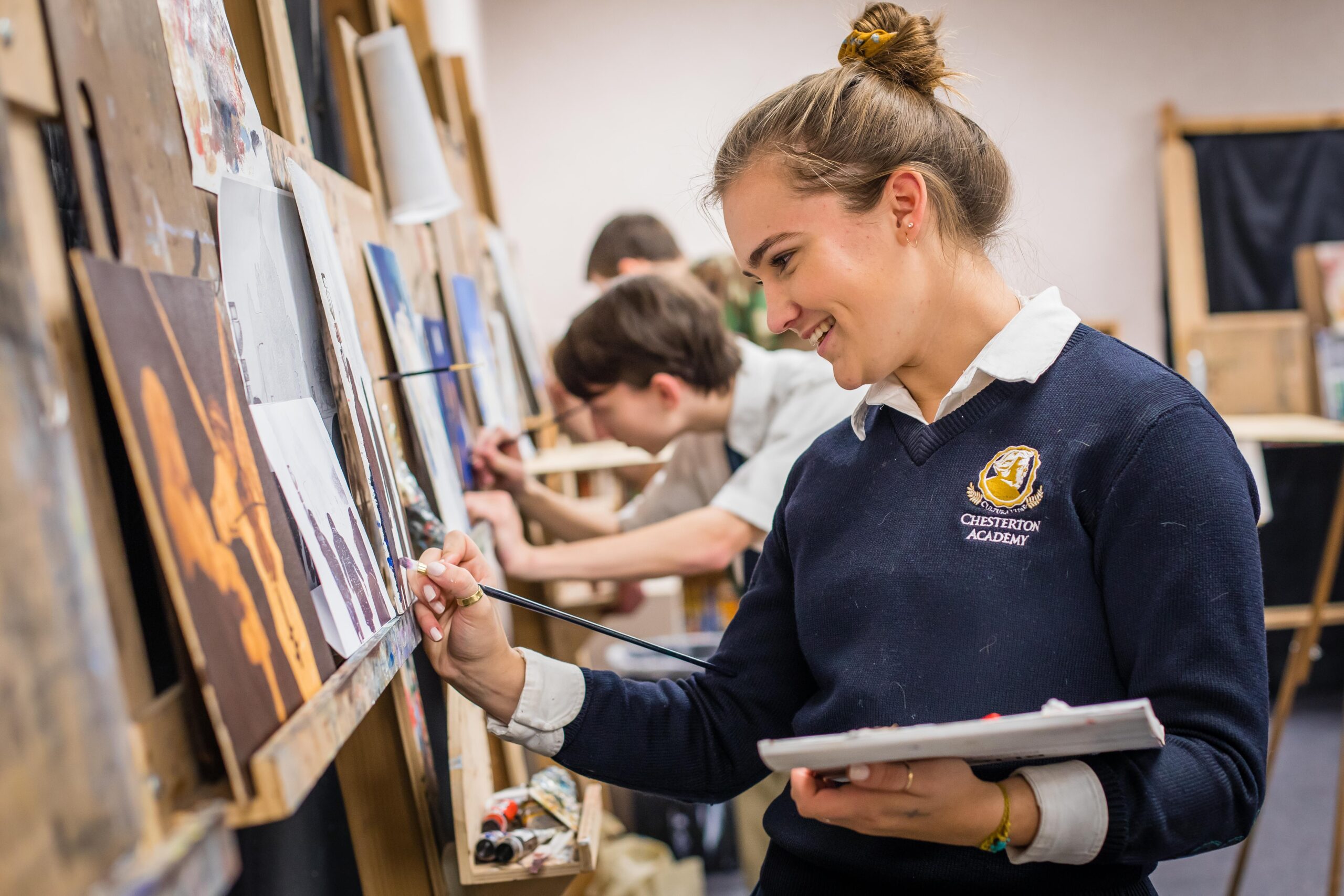
When the subject of Chesterton Academy comes up, as it often seems to do when I am talking to people, I am asked about what is distinctive about a “classical” education. I answer that the three main pillars of a classical education are truth, goodness, and beauty.
It should not be a matter of dispute that education is naturally about teaching the truth, though even this basic principal is disputed in today’s society, where no one is willing to say—or accept— what the truth is, even though no one wants anything false taught to their children. As G.K. Chesterton says, the modern world cannot agree what the truth is, but they still say let us teach it our children. His definition of education is simple: it means passing the truth from one generation to the next.
Goodness is another category that is constantly under a barrage, as the world tries to twist what has always been forbidden into something that is first tolerated, then welcomed, then praised, then demanded, then required. In 1926 Chesterton predicted that the next great heresy would be an attack on morality, especially sexual morality.
Which leaves us with beauty, which is perhaps the most disputed of the three. Beauty is casually dismissed as being merely in the eye of the beholder, a strictly individual experience, in which case it cannot possibly be taught.
And so a school that teaches truth, goodness and beauty is rather shocking to the modern world.
Since Chesterton Academy is a school rooted in Catholicism, there are some who might understand or even expect that we would strive to teach truth and goodness in our classes, whatever we claim those things to be. But they are still appalled that we should claim to teach beauty. Such narrowness is really quite intolerable.
So let’s talk about ugliness.
One of the chief characteristics of the modern world is its ugliness. Our cities are gray and unimaginative. The only color comes from advertisements. When Chesterton first saw the lights of Broadway, he said how beautiful they would be if only one could not read. Our homes, our businesses, and even our churches are striking for how blah they are. They seem to be constructed only to be functional, and sometimes they are not even functional, because even the ugliness gets in the way of the way of the purpose of things, because one of the purposes of things is to be beautiful.
Chesterton says, “Wherever men are happy, they will build beautiful things.” The modern world is ugly because we are unhappy. The modern world is ugly because we do not love the modern world.
That is why there is a connection between “lovely” and “beautiful.”
“Men do not produce art in order to become joyful,” say Chesterton. “They are joyful, and therefore they produce art. Men do not dance in order to be happy. They dance because they are happy. . . Art is not the mother, but the child of beauty.”
So how do we teach beauty? Well, by teaching truth and goodness. Because these things bring joy. But we also teach art. Chesterton says, “Art is born when the temporary touches the eternal.”
And so at Chesterton Academy, we teach art. It is not an elective; it is a requirement. For four years, the students learn a skill that can be taught: drawing and painting. It starts with something as simple as calligraphy: a trained discipline in making beautiful letters. Then they learn lines and shapes and reproducing exactly what has been placed before them. Add shading, which is the study of light and darkness, with all its philosophical implications. “All depends,” says Chesterton, “on what is the philosophy of light.” This prepares them to study physics as well. Rembrandt says, “Light is everything.” Any one who has looked at one of his paintings understands this.
Then they paint. By their senior year, they are copying oil masterpieces. And they are beautiful.
But we also teach them to sing. They learn the simplicity of plainchant. Then intricacy of polyphony, and then we add layers of harmony. Chesterton says that music is beauty in solution. Pure beauty. Which is why he says that beauty is a fact and harmony is only a relation between facts. And when our students sing, it is beautiful. Again, it is not an elective. It is a requirement. It is not an extracurricular activity, but the students develop such a love for singing that they form singing groups as an extracurricular activity.
We also allow students to act and perform. At Chesterton Academy, drama is required. Every student has the experience of learning how to stand up in front of an audience and make a piece of literature come to life. It is the most incarnational of all the arts, as the word becomes flesh. My wife, who teaches drama says it is the most Christian of all the arts because it is about dying to self, and rising as a new creature. It is about working together as a body, with each part serving a particular function, so that if one part fails, the whole body suffers. And nothing creates greater unity and solidarity than when a class works together to put on a play, combining choreography and color and art. And light. And it’s beautiful.
That is how we teach beauty.
